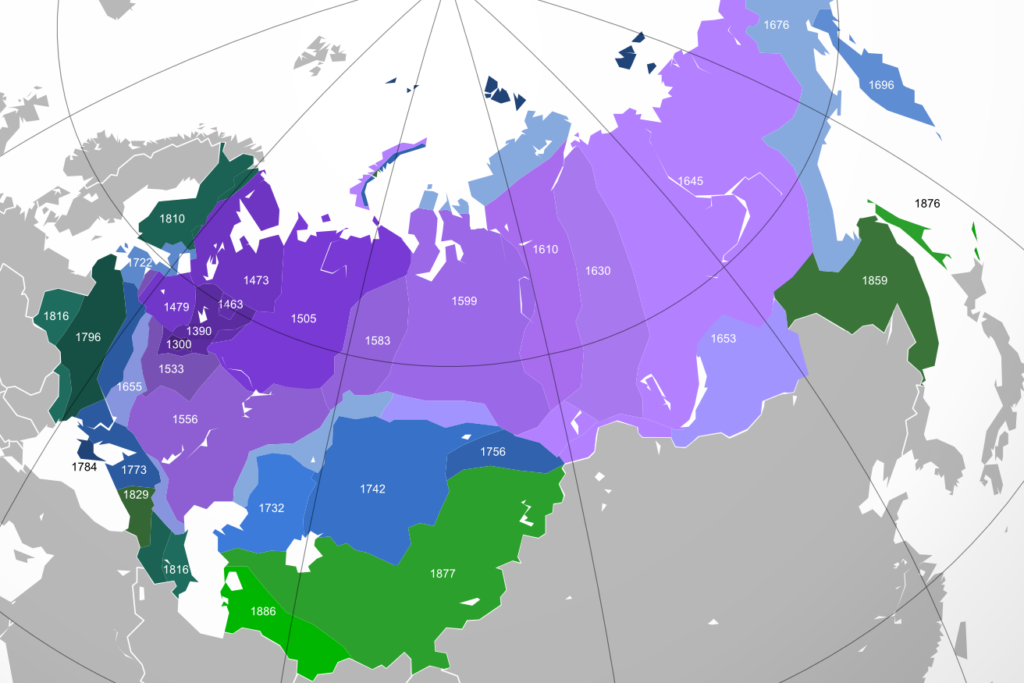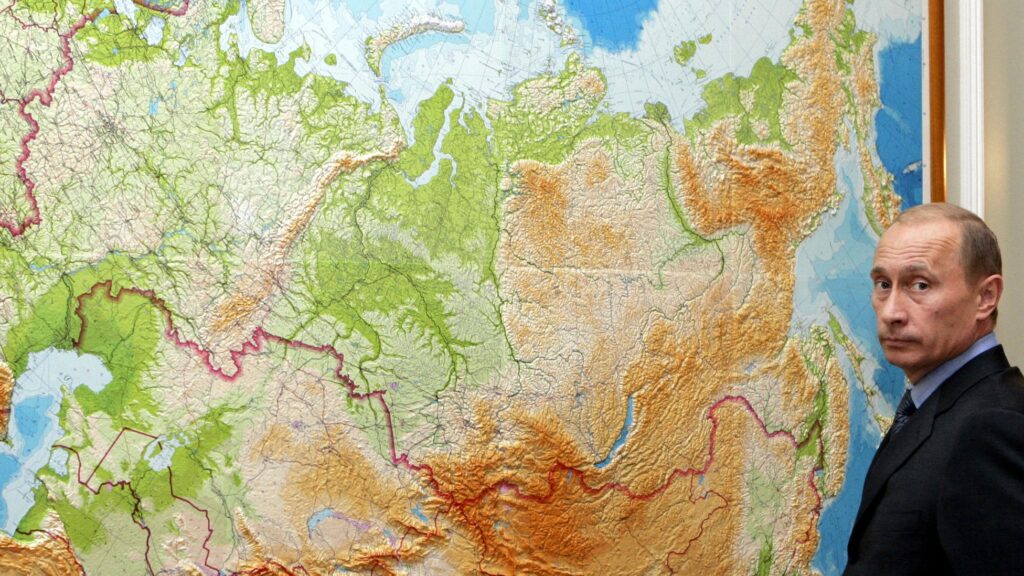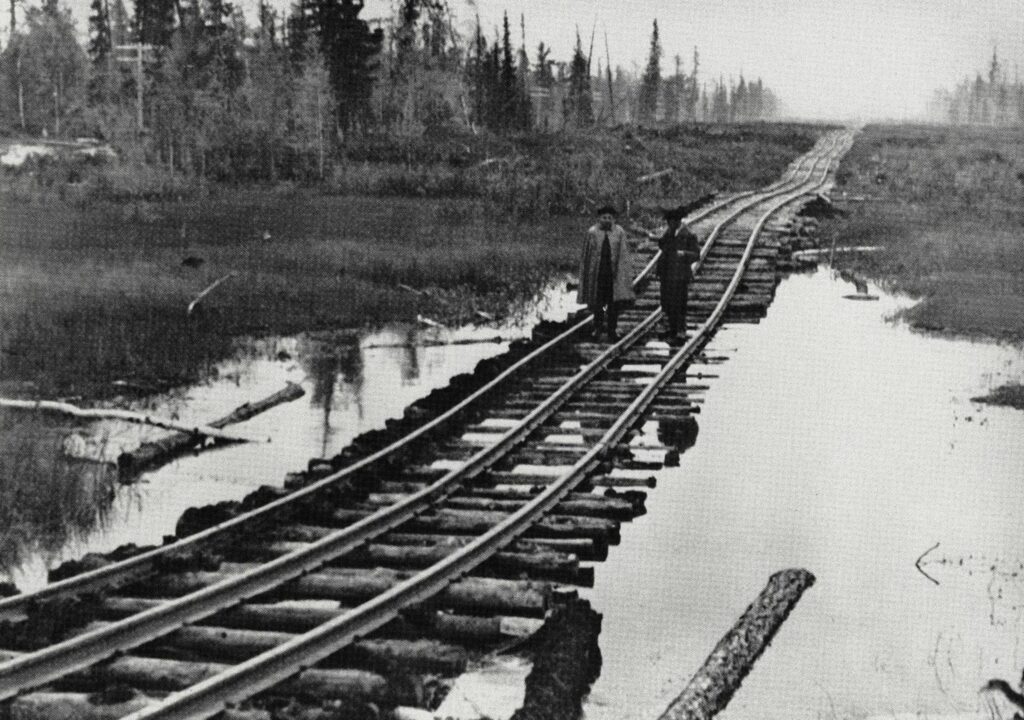In the first article of this series, we looked at the strategic concepts of growing tall vs growing wide. Leaders can harness these concepts to grow and expand any organisation. Both concepts however require leaders to different decisions and to demonstrate different leadership behaviours. In particular, tall growth requires a constant focus on quality, reinventing oneself and anticipating future challenges.
This article will explore the choices, decisions and strategies that turned Russia into the world’s largest country and major power. Russian history is fascinating and replete with fascinating lessons for current and aspiring leaders.
How Russia became the World’s largest country
The origins of the Russian nation are vast and too complicated to cover in detail in this article. Russia’s name comes from the Norse word Rus which means ‘men who row’. Indeed, Vikings invaders from Scandinavia founded the Kievan Rus in the 9th century. This state grew to become a vast collection of principalities centred on Kiev and became Europe’s most modern state during the 11th century. This country was not centralised in the contemporary sense, and infighting amongst princes initiated a process of gradual decline and weakening of this state. However, the coup de grace was the Mongol invasion of 1240 which led to the sack and destruction of Kiev. Survivors fled deep in the northern forests, and the remaining noblemen agreed to vassalize themselves the Mongols.
Moscow emerged as the preeminent Russian principality during the 14th century, partly by working with Mongols and collecting tributes on their behalf. Eventually, it rebelled against the Mongol led Golden Horde and became the Tsardom of Russia in the 16th century. From this point, both by design and by default. Russian leaders pursued expansionist policies that turned the country into the World’s biggest.

One of the drivers of this expansion was defence. Nomadic raids by the descendants of the Mongols remained a fact of Russian life well until the 18th century. One objective of these raids was capturing slaves, which were subsequently sold to the Turks from Crimean ports. As a response, pushing the boundaries of Russia to provide advanced warning of raids and a larger territorial buffer made perfect sense. This strategy eventually culminated in the conquest of Crimea and the decisive end of nomadic raids. Defensive reasons also prompted the conquest and annexation of the Kazakh steppes, the deserts of Central Asia and large parts of the Caucasus. The net result is that by 1914, Russia’s possessed clear southern boundaries defined by geographical features, and a vast territorial glacis that protected its core regions. In wartime, the country could trade space for time and let invaders bog themselves down in Russia’s vastness.
Resource acquisition was another driver of territorial expansion. Economically, Russia in the 16th century was under-developed and lacked the sophistication of Venice or other European nations. It did however possess one resource that could be traded for a very high price on the World market … furs. Finding rich sources of furs and new lands which could be exploited and settled; prompted the conquest of Siberia under Tsar Ivan the Terrible. The conquest of Siberia is fascinating because of the speed at which it took place. All in all, it took only a mere 60 years for Russian Cossacks to cross the Urals and reach the Pacific Ocean. The search for new sources of furs even led to the discovery and colonization of Alaska.
A wide empire, run from the centre
The vast quantity of resources that Russia accumulated through its territorial expansion, brought it great power status from the 17th century. While it lacked the commercial power of some of its rivals, the country could mobilise more soldiers than anyone else in Europe. Strong rule from the centre and a powerful noble class, unleashed the power of the multitudes. Given the constant pressure of nomadic raids and territorial expansion, this system made perfect strategic sense.
This strong noble class shouldered the burden of defending the country and gathering resources, by taxing peasants who were eventually tied to the land as serfs. While extremely inefficient, serfdom guaranteed a level of protection to the peasants and provided nobles with a pool of manpower to work the land and repel raids. Additionally, possessing a strong noble class meant having a powerful military caste at hand, ready to be used to support campaigns of territorial expansions. It also meant that the state could fill available leadership positions via patronage and favours.
With our modern-day eyes, it is easy to see that this system was inefficient, prone to stagnation, excessive conservatism and complacency. Yet its relative simplicity coupled with strong autocratic leadership from the top made it work. An interesting lesson here is that quantity has a quality of its own. Sometimes the power of the masses is all that needed to gain an edge over others. Russian history and expansionist drive, is also an example of the adage of “offence is the best defence” in action. Had Russia not pushed outwards from the 15th century, it may have ended up subsumed by other countries and disappeared from history altogether. Something which almost happened at the start of the 17th century during Russia’s Time of Troubles.
It is interesting to observe that expansionism remained a feature of Russian history into the 20th century. Creating a string of satellite states in Eastern Europe from 1945 followed the same security imperatives of earlier centuries. Namely, gaining a protective glacis which could act as a defensive moat in case of attacks from other powers. Another benefit of Russia wide-ranging territorial expansion is that the nation now sits on a treasure trove of natural resources. In a way, the discovery of vast oil and gas resources in Siberia vindicated the original decision to go wide and conquer these vast empty lands. Russia’s vast size also enabled the country to project power in many directions to defend its interests. In short, going wide and gathering as much land as possible endowed Russia with plenty of assets to leverage. For Russia’s leaders, quantity truly had a quality of its own.

Yet, Russia is no longer the power that it once was, and may never become a superpower again. Something went wrong and its old formula of aggressive expansion failed at some point during the 20th century. What’s more, Russia vast expanse is not without challenges. As I said in the first article of this series regarding wide empires – “Communication infrastructure such as roads will be strategically significant as well.”
Here, a strong argument exists that Russia’s infrastructure is underdeveloped for a country of its size. This observation does bring an interesting question since I noted in the same article that – “a carefully planned and thought out tall wide empire, can become a superpower of colossal proportions”.
Could Russia have decided to grow tall after going wide and become a hegemon?
Did Russia attempt to grow tall?
By the start of the 20th century, the Russian Empire reached its maximum territorial extent. Yet, while the country was quantitively powerful and could assemble large armies. Qualitatively, its economy was backwards and the country behind most powers on key metrics. The legacy of serfdom meant that agricultural productivity while rising, remained low. The power of the nobles led to low levels of industrial investments, which were mostly driven by foreigners. Finally, the country was under-educated with a majority of its population illiterate. In short, the country was ripe for drastic changes. The need for such changes was correctly identified by reformist ministers such as Stolypin, whose reforms aimed to foster a prosperous peasant class. Another objective was to drastically accelerate the settlement of Siberia by removing restrictions with tied peasants to the land. In the end, the reforms proved to be too little too late and the Soviet regime pursued very different policies from the 1920s onwards.
The most commonly known of these policies is centralised economic planning. True to the earlier Russian tradition of strong leadership from the centre. The Soviet state embarked on a series of five-year economic plans from 1928 onwards, to compensate for the country’s industrial backwardness and lack of productive capacity. These plans prioritised heavy industry and set ambitious goals to increase productions in all sectors. By some metrics, these plans were successful and resulted in the development of vast metallurgical industries and engineering capabilities. In a way, the industrial apparatus developed by these plans enabled the Soviet Union to be victorious in WW2. At the same time, vast campaigns took place to eliminate illiteracy and create a modern education system. Today’s Russia still owes much of its scientific infrastructure to Soviet developments. The achievements of centralised planning nevertheless came at a great human cost.
The concurrent policy of agricultural collectivisation resulted in a famine that killed nearly 10 million people. The scale of such losses is difficult to comprehend. Both because of their scale but also because they were preventable and the result of decisions made at the time. By stripping peasants of their private property, the Soviets Union stepped back in time and reimposed a form of serfdom on its people. Agricultural regions with some of the best soils in the World, Ukraine and southern Russia, were turned into lands of death and famine. This catastrophe turned the Soviet Union into a net food importer and failed to generate the hoped-for grain surpluses needed to industrialise the country. Interestingly, the proposed policies were opposed by a large section of the Communist Party at the time. Nevertheless, extreme voices who favoured fast social change and breakneck pace industrialisation, triumphed over any sense of moderation. However, the pursuit of extreme measures to build up the Soviet Union was a grievous act of self-harm whose consequences remain to this day.

Another policy to level up the Soviet Union with the West and develop the country’s vast space and resources. Was to use vast quantities of labour, both forced, voluntary and voluntold in great works and construction projects. The infamous Gulag system had the twin purposes of getting rid of undesirable elements, and developing remote resource-rich regions. This murderous system was inefficient and shortfall in productivity were answered by working inmates to death on starvation rations.
Through ideological rigidity, lack of pragmatism and entrenched interests, with communist apparatchiks fulfilling the role of the nobility of yore. The Soviet system eventually failed. Moreover, the transition to a capitalist system was mostly unplanned with no clear sense of direction. In conclusion, the Soviet Union failed its mission to grow tall and become a hegemon.
What can leaders learn from Russian history?
Several interesting themes and leadership lessons emerge from Russian history. A good argument can be made that going wide worked well for Russia. Today, Russia still derives a lot of power from its sheer size and the quantities of natural resources it can trade on World markets. Size matters and growing wide to reach a certain size, and be present in many geographies or fields has a lot of advantages. In Russia’s case, it has enough flexibility to form alliances and partnerships with powers both in Europe and in Asia. Similarly, a company or organisation present in multiple markets can leverage opportunities in successful markets to compensate for losses in underperforming markets. In short …
Quantity brings flexibility
Additionally, a theme in Russian history is that having large quantities of something can be all that is needed to gain an advantage over others. In the grand scheme of things, five tools that work 30% of the time are better than one tool which works 100% of the time. Therefore …
Quantity has a quality all of its own
Going back to earlier parts of the article, a theme was that defensive concerns drove Russia’s expansionism. Since there were no natural boundaries between it and the steppe nomads. Pushing forward and gradually establishing control over the steppe was the only sensible solution. Consequently, if working in a competitive environment, one should not forget this adage.
Offence is the best defence
I spoke in an earlier article about paths not taken and the power of perspective. In hindsight, Russian history is full of potential paths not taken, and it is obvious that past Russian leaders lacked perspective. Russia loss of its superpower status was avoidable had different decisions been taken. It could have successfully leveraged the gargantuan assets at its disposal and turned itself into a tall wide superpower. Doing so necessitated avoiding the calamities of the Soviet Union to focus instead on the well-being, education and growth of all the diverse peoples of Russia. The most important resource needed to grow tall are human resources. As French philosopher Jean Bodin once said.
Mankind is the only true source of wealth
Growing tall requires a strong base and strong foundations which Russia only partially built during its tumultuous history. Building a strong base requires considerable investments, which can sometimes be very costly. Nevertheless, the alternative of neglecting one’s base and treating it as an expendable resource for short-term gains. Never works in the longer term. For ideological reasons, Soviet Russia tried to do too much too quickly and failed. It tried to run before it could walk and forgot that.
Strong foundations and a strong base are necessary for success
Lastly, the most important lesson from Russian history, in my opinion, is the destructive power of ideology. It is important to remember that ideology can take various forms and doesn’t need to be backed up by political manifestos. I have for example often heard in the past few months that “the future is online” or “the future is hybrid”. Yet by themselves these mottos mean nothing. In their eagerness to embrace them, leaders may end up ignoring the potential consequences of their actions. I have said before that curiosity is a much-underrated leadership trait. Curiosity begins by asking questions and leaders should always remember the following unless they want to fall prey to the dark clutches of ideology, dogma and ignorance.
Question everything!
This is a fantastic article that connects historical events with an uncertain future. Keep writing Florian!